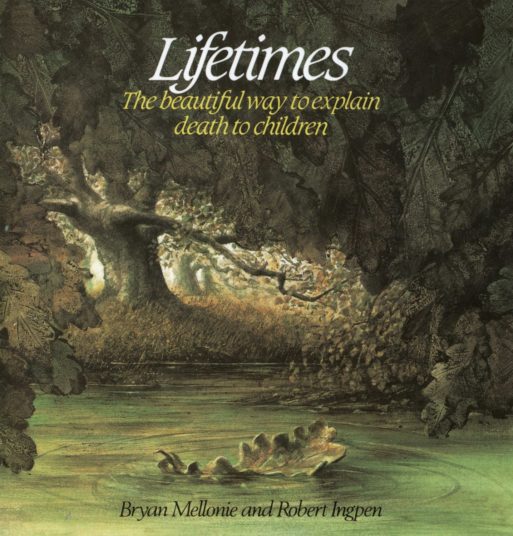 Most children’s books that tackle the issue of death and dying revolve around the grieving process. They usually tell the story of a pet or a grandparent that passes away, and they tend have a uniform message: that the pain caused by the loss will ease over time, and that the people we love are never really gone, but remain alive in our hearts and memories.
Most children’s books that tackle the issue of death and dying revolve around the grieving process. They usually tell the story of a pet or a grandparent that passes away, and they tend have a uniform message: that the pain caused by the loss will ease over time, and that the people we love are never really gone, but remain alive in our hearts and memories.
Lifetimes: The Beautiful Way to Explain Death To Children is singular among the children’s books on death and dying that I’ve come across; it’s a straightforward attempt to simply explain what death is. The rest of the book is as straightforward as the title. Children tend to ask straightforward questions. In our attempts to protect them from hard truths and preserve for them illusions of safety and permanence, we often don’t give straightforward answers.
Lifetimes: The Beautiful Way To Explain Death is a forthright dose of the reality that lifetimes are finite.
There is wisdom in presenting the difficult realities of being a human to children incrementally, with sensitivity to their cognitive development. Child psychoanalyst and pediatrician Donald Winnicott wrote of the importance for the young child to experience a “presentation of the world in small doses…the preservation of a certain amount of illusion — an avoidance of too sudden an insistence on the reality principal.” Lifetimes: The Beautiful Way To Explain Death is a forthright dose of the reality that lifetimes are finite. When the little one in your life is ready to receive that dose, this book is a beautiful resource to help you introduce the concept of death.
This book doesn’t mince words, but the tone manages to come across as calm.
Lifetimes: The Beautiful Way To Explain Death To Children, written by Bryan Mellonie and illustrated by Robert Ingpen, tells us that everything that lives has a lifetime, and that this lifetime has both a beginning and an end. Its tone is calm, direct and unsentimental. “It may be sad,” the books says, “but it is the way of all things, and it is true for everything that is alive. For plants. For people. For birds. For fish. For trees. For animals. Even for the tiniest insect.” This book doesn’t mince words, but the tone manages to come across as calm. The writing is repetitive and the accompanying illustrations, which range from a nest with newly-laid eggs to a young apple growing on a tree branch, to a circle of broken shells, to the remains of a butterfly, are delicate and done in soft earth tones. The overall effect is oddly soothing, considering the startlingly forthright message. The book explains that the fish die, that birds die and that people die with the same sense of expository detachment. If you’re looking for a simple, truthful introduction to the idea that everything that lives must die, this book is an interesting tool to use.

 lifetimes: The Beautiful Way to Explain Death To Children written by Bryan Mellonie and illustrated by Robert Ingpen
lifetimes: The Beautiful Way to Explain Death To Children written by Bryan Mellonie and illustrated by Robert Ingpen



 Recovering Cremation Remains After the Los Angeles Fires
Recovering Cremation Remains After the Los Angeles Fires
 “As Tears Go By” by Marianne Faithfull
“As Tears Go By” by Marianne Faithfull















